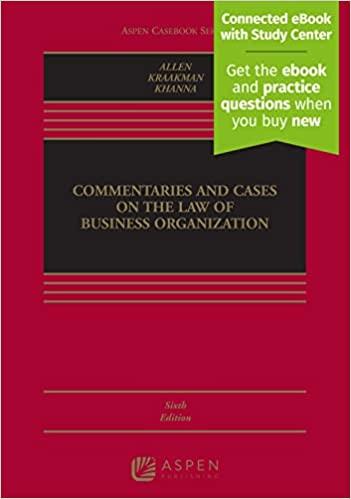Question
Read the case Ball v. Hilton Hotels and BRIEFLY and shortly explain what happened in the case FACTS: CONCLUSION: It appears from the record that
Read the case Ball v. Hilton Hotels and BRIEFLY and shortly explain what happened in the case
FACTS:
CONCLUSION:
It appears from the record that the plaintiff, a resident of Michigan, went to Cincinnati, Ohio, on May 27, 1967, with a reservation to stay at the defendant's hostelry, known as the Terrace Hilton Hotel.
Upon arrival at the hotel, she was informed by the defendant's doorman that there was a downtown area electric power failure and there was no lighting or elevator service in the hotel. The hotel lobby and registration desk were on the eighth floor of the hotel building. The plaintiff checked her baggage with the doorman and then inquired about the use of restroom facilities.
In response to her request, the doorman advised plaintiffthe restroom was downstairs; that it would be quite dark on the staircase due to the electric power failure; that plaintiff would not be able to see the doors to the restrooms; and that the doors to the restrooms were located to the right of the bottom of the stairway. The doorman gave the plaintiff a small lighted candle, and she proceeded down the darkened stairway, moving slowly and carefully by groping along the handrail.
After arriving at the platform portion of the stairway, plaintiff began to grope about for the restroom door and while so doing she fell to the bottom of the stair steps and received personal injuries which are the subject of this appeal.
In her complaint against the hotel, plaintiff alleges that her personal injuries and resulting damage were directly and proximately caused by the negligence of the defendant in inducing her to enter a hazardous, darkened area of the hotel facility.
Before the defendant would be entitled to a summary judgment on the theory of assumption of the risk, it must be proven that plaintiff had full knowledge of a condition; that the condition was patently dangerous; and that she voluntarily exposed herself to the hazard created.
Plaintiff was told that the electric power in the downtown area had failed and there was no light or electric power in the defendant's hotel; that it was dark in the stairway leading to the hotel restrooms; that plaintiff had full knowledge of the darkness when she walked down the stairway with a small lighted candle; and that she moved slowly and carefully as she descended the stairway.
Since it appears there is no genuine issue of any material fact, the trial court correctly determined the plaintiff assumed the risk of her injury and damage when she proceeded into the darkened area of the premises in question
Step by Step Solution
There are 3 Steps involved in it
Step: 1

Get Instant Access to Expert-Tailored Solutions
See step-by-step solutions with expert insights and AI powered tools for academic success
Step: 2

Step: 3

Ace Your Homework with AI
Get the answers you need in no time with our AI-driven, step-by-step assistance
Get Started


